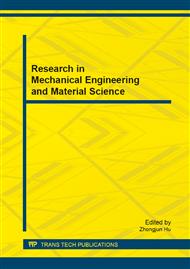p.303
p.310
p.314
p.320
p.324
p.330
p.334
p.338
p.345
Safety Assessment and Remaining Service Life Prediction of Sandwich Marine Air Bottles
Abstract:
Based on the fatigue failure analysis of marine air bottles, the research on the safety assessment and remaining service life prediction is conducted in this paper. Particularly, the method of sandwich evaluation is obtained via sandwich characterization and the formula to calculate the fatigue crack growth rate is obtained via fatigue crack testing: three typical types of sandwich on marine air bottles are investigated, and the corresponding safety assessment results as well as the critical sandwich size are obtained. It is seen that the theoretical formula is valid, and that the air bottle can be safely used till next cycle as long as the initial sandwich angle depth less than 10°.
Info:
Periodical:
Pages:
324-329
Citation:
Online since:
October 2013
Authors:
Price:
Сopyright:
© 2014 Trans Tech Publications Ltd. All Rights Reserved
Share:
Citation:


